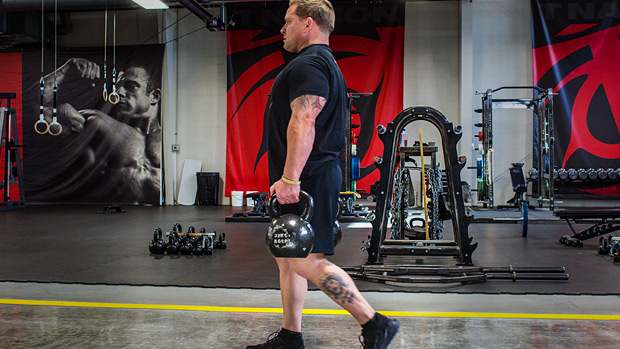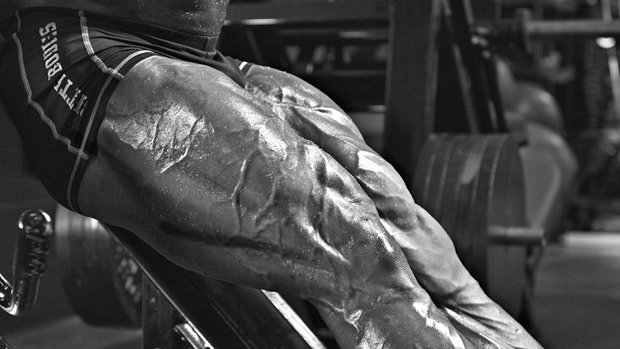If you want to pack on slabs of muscle, melt off body fat, improve your conditioning, or get really strong, you want to do farmer's walks. And they also provide a fast, incredibly efficient and simple way for the coach and lifter alike to find and fix weaknesses.
When you find and fix your weaknesses, you increase your body's resilience. This allows you to safely handle the training frequency, volume, and intensity you need to reach your training goal. Here's how to do it.
Step 1: Finding Your Weakness
Work your way up to a fairly heavy weight, something heavy enough to scare you a bit. (You can use dumbbells, kettlebells, farmer's walk implements, a trap bar, etc.) Set up your phone to film your set and, if possible, use a trusted training partner to give you some feedback.
Now, pick up the weight and go for a 30-second walk. See and feel what happens. Here are some things you might notice:
- Your hands hurt. That means your hands are soft and weak. (Sorry, don't shoot the messenger.)
- You felt your grip giving out. That means your grip is weak, of course.
- You can't keep your chest up. That's because your upper back is weak.
- Your hips move like a Latin dancer. That means your abs and hips are weak.
- You're bent at the hips and can't walk tall. That means your hips are weak.
- Your feet are floppy. That means your legs are weak.

Step 2: Fix Your Weakness
Normally, when it comes to fixing weak points, we immediately think about accessory exercises. Yes, you can definitely include extra work for your grip, legs, core, hips, or upper back. However, you can also simply use farmer's walks to fix your weakness.
To do this, back down the weight you used for your test weight to find something you can do with perfect form and truly own the movement. As you train the movement, focus on the corresponding cue or strategy based of your weakest link:
Your hands are soft and weak.
The Fix: Start at a weight your hands can handle. Watch for blisters – this means you're overdoing it. Focus on slow steady progression and you'll build yourself a nice pair of organic lifting gloves (i.e. calluses).
Your grip is weak.
The Fix: Dig your hands into the handles. Focus on crushing the handles for the entire set.
Your upper back is weak.
The Fix: Get your chest up before you engage the weight. Focus on keeping your chest up for the entire set.
Your abs and hips are weak.
The Fix: Focus on keeping your core tight and staying in control as you walk. In addition, do a 1-arm farmer's walk session about 3 days later each week. For the 1-arm variation, avoid leaning away from the weight and keep the weight a few inches off your hip. This will light up your obliques.
Your legs are weak.
The Fix: Focus on taking slower, controlled strides with a nice heel-to-toe motion.
Programming Notes
Don't be afraid to start on the light side. Remember, you're not in the finals for the frame carry at the Arnold Classic. You want to be able to do the movement perfectly and start a productive cycle of gains.
Train farmer's walks once per week for 3-5 sets of about 20-40 seconds – the shorter range for strength goals and the longer for endurance/conditioning goals.
Make sure your form doesn't start to slip during the set. If this happens before you complete your desired time/distance, put the weights down, rest as needed and then finish the set. Rest 2-3 minutes between sets.
Add 5 pounds per hand per week (or 5-10 pounds per week if using a trap bar).
Film yourself from time to time to make sure your form isn't getting sloppy. If you ever find your form slipping, drop the weight back 10-20 pounds and build back up.
Be patient, stay consistent, and keep adding weight each week. Before long you'll be lifting way more than your initial test weight – with great form and no weak links!




